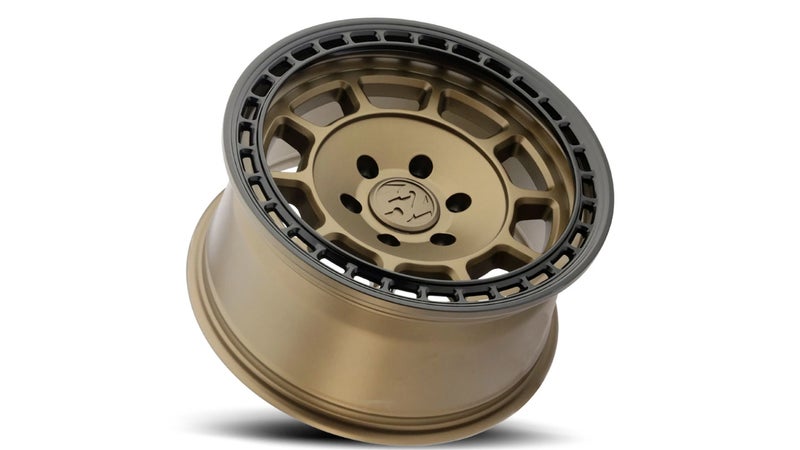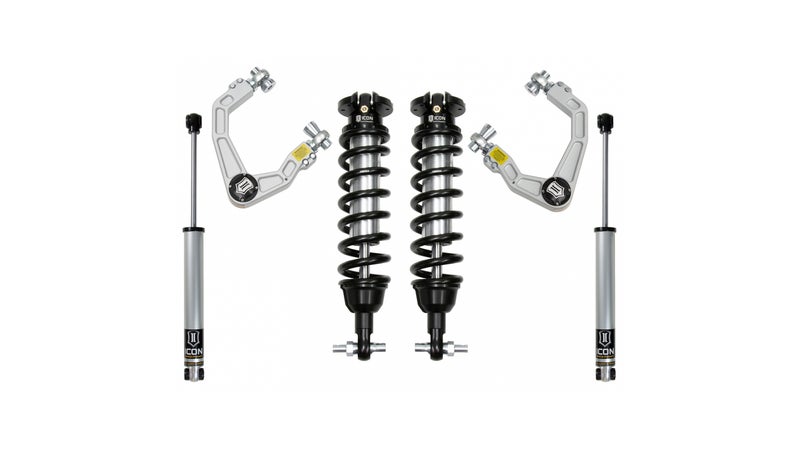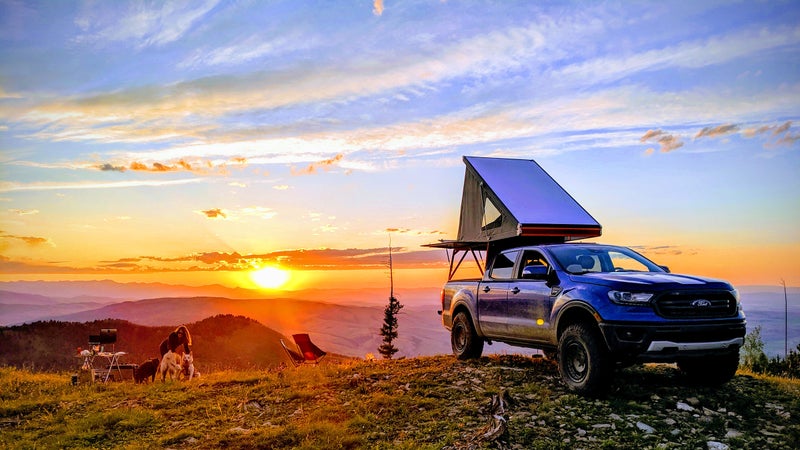Compared to their full-size relatives, midsize pickups are easier to live with in town and better able to negotiate tight off-road trails that often lead to the best campsites. But these smaller trucks have a few limitations. Here’s how to fix those.
Why Build?
Stock trucks are made to serve the average driver. Here in the U.S., that means daily commuting, a little towing and hauling, and maybe even some light off-roading on weekends. If your needs, like mine, are a little more heavy-duty, then modifying your truck will allow you to access much more capability. If you’re smart about it, you can tailor a vehicle to your exact needs.
Tires
These humble black rubber hoops are the most important component on any vehicle. I chose the for this build, in large part because they’re a great all-round option that work as well in inclement weather on the road as they do over rocks or through mud. They’re also available in a really unique size (34 x 10.5–17) that’s particularly suitable for midsize trucks and SUVs.
A taller tire like this rolls over big obstacles more easily. But taller tires also reduce your effective gearing, which then impacts your performance and fuel economy. That’s a benefit of the Ford Ranger: thanks to its ten-speed gearbox and well-chosen final drive ratio, it can push 34’s without the need to regear. On these tires, performance feels like it’s taken only a very small hit—acceleration is slightly blunted, by what feels like maybe 5 percent or so. They have moved my speedometer out of calibration, so until I run a few more tanks of fuel through this thing in a normal driving scenario and then recalculate it, I’m unable to report on the impact all this has had on my fuel economy.
But really what makes this size of tires unique isn’t the height but the width. They’re about two inches narrower than other off-road upgrade tires of similar height, making it easier to stuff the tires into the relatively small wheel arches of a midsize truck. That narrow width also improves everything from ride quality to outright traction.
A narrower tire is also a lighter tire. Compared to a 12.5-inch tire of similar diameter, I’m saving about ten pounds a corner with this size. Because that saving is in the tire, that’s 40 pounds less weight that my engine has to spin up when I accelerate, 40 pounds less weight that my brakes have to decelerate, and 40 pounds less weight moving my suspension up and down.
Narrower tires also grip better off-road. At 4,441 pounds, my truck is relatively light, but by distributing that weight across a smaller contact patch than a wider tire, these 10.5’s apply more downward pressure per square inch of contact patch, leading to stronger mechanical keying with the surface. Back on the road, at road pressures, that narrower width also provides lower rolling resistance and presents less surface area to the wind, creating less drag.
Oh, and did I mention that a 34 x 10.5 will fit in the stock’s spare location when mounted on the factory-provided steel wheel? It’s the absolute largest tire you’ll be able to do that with.

Wheels
I wouldn’t be able to fit this much tire on the Ranger without changing the wheels. These push the tires out from the hub a little more than the stock wheels, creating that extra room. Their unique rock ring, mounted around the perimeter of the rim, also protects the vulnerable tire stem and sidewalls from damage. Judging by the dings and chips I’ve already incurred, this really does work. Off-road trails tend to be strewn with loose, sharp rocks, and tire damage is common. These wheels should help prevent that.
Aftermarket wheels like these, which are specifically designed to support off-road driving, are also stronger and more resistant to impacts than stock wheels. They feature a rim designed to help retain the tire bead at the kind of very low pressures you may need to use to traverse loose sand or deep mud. All that typically adds up to a lot more weight, but these Fifteen52’s weigh just 27 pounds apiece, saving you about five pounds a corner compared to other off-road wheels.

Suspension
The purpose of taller suspension is to gain clearance for larger tires. With my setup, I’ve gone from a 30-inch tire to a 34-inch one, and my new front suspension is set at about three inches of additional height. Between that lift and the larger tires, I’ve gained about five inches in total height. By going with just enough extra suspension to clear the tires, I’m keeping my center of gravity as low as possible, which keeps handling safe both on-road and off.
Aftermarket suspension also allows you to increase the performance of your truck by fitting higher-quality equipment. This costs $3,100 but also leads to massive, immediately perceptible changes in the truck’s driving abilities. Not only can I now clear larger obstacles, but I can now glide over rough dirt roads that were once uncomfortable at 15 or 20 miles per hour at 40 or 50 miles per hour. Part of the reason for that is that Icon’s front suspension increases the Ranger’s wheel travel by 35 percent. That both enables the tires to stay in contact with the surface over tougher obstacles and increases the amount of time the dampers have to respond to inputs.
Thanks to the superior damping and control, on-road ride quality and handling are also improved. The truck no longer gets out of sorts over potholes, and I’m tackling high-speed highway corners with much more confidence—quite a feat given the taller center of gravity. Three grand is a lot of money, but it’s just totally transformed the driving experience.
(I’ll provide a more thorough explanation of how this system and other aftermarket suspensions achieve this wizardry another time.)
Storage and Shelter
You probably chose a midsize truck because it can fit into parking spaces, between two trees, or over a rock. But in doing so, you also chose a truck with limited bed space. The easiest way to gain the ability to securely tote more gear is with a bed topper. But traditional fiberglass toppers are extremely weak. Mount a rooftop tent and the bumps and vibrations you experience off-road will eventually destroy them.
Enter . Built on a steel-tube frame clad in locking aluminum panels, they provide secure storage that roughly doubles your available space. And by integrating a rooftop tent into the topper—it forms the roof—Go Fast Campers is able to offer a total storage-and-shelter solution that’s also extremely light.
This is something I’m able to take advantage of every day—it expands the practicality of the truck while also massively enhancing the pickup’s ability to support outdoor activities. I get secure space for my stuff, a comfortable place to sleep, a standing height, sheltered work space, and a roof rack capable of supporting 500 pounds, all in one package.



